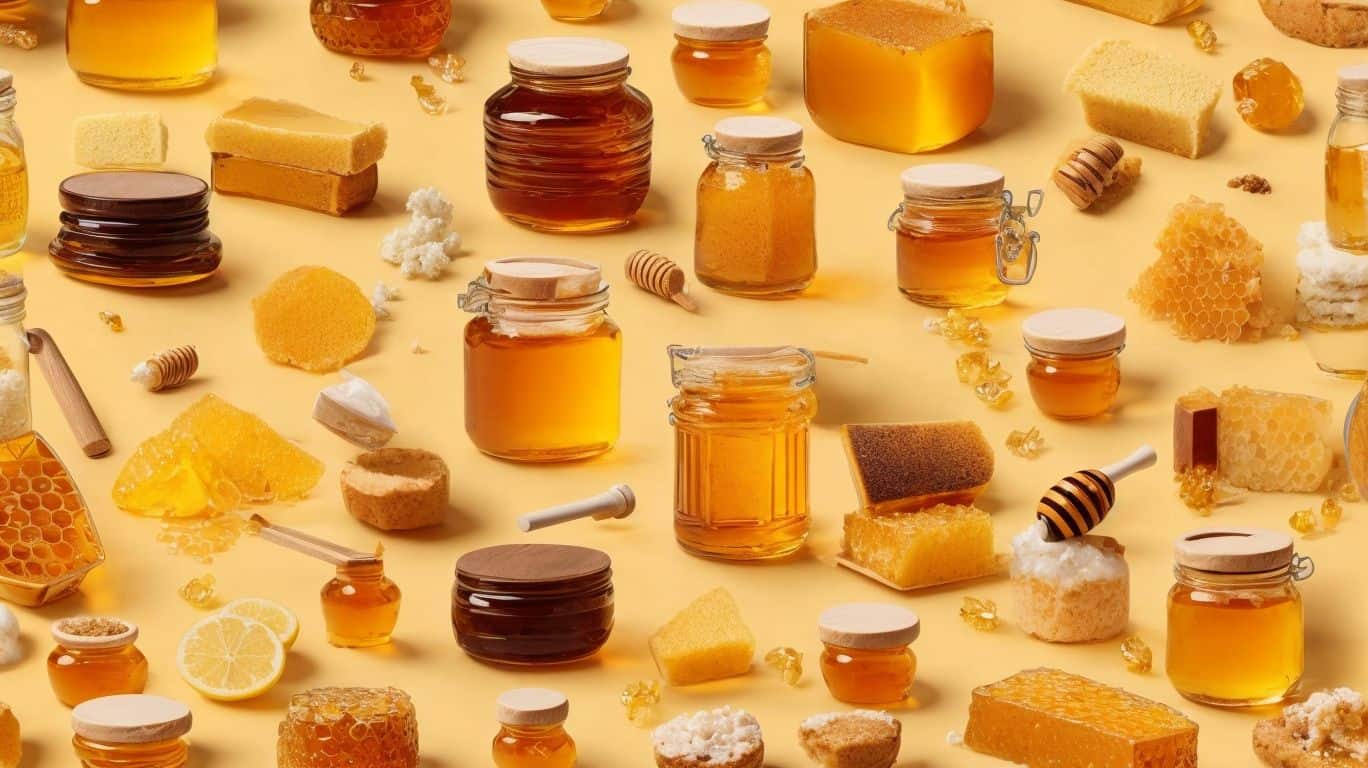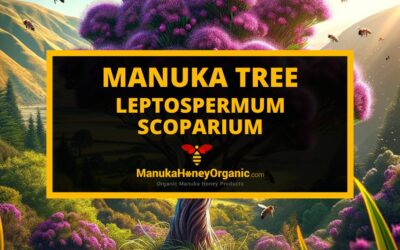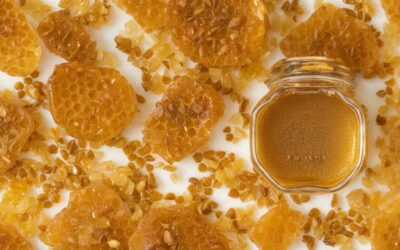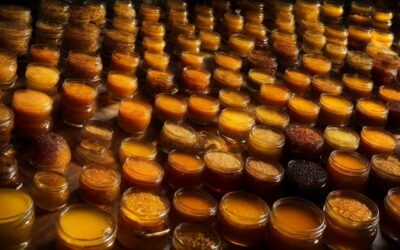Welcome to the world of honey production, where terms like “nectar,” “pollen,” and “hive” may seem simple, but there is a whole jargon that can leave you feeling perplexed.
But don’t worry, we’ve got you covered.
In this article, we will dive deep into the complex terminology used in the honey industry, so you can navigate it like a pro.
Honey Industry Terms
Are you new to the world of honey production and beekeeping? Or perhaps you’re just curious about the intricate industry terms used by those in the apiculture world.
In this section, we’ll provide a comprehensive glossary of honey industry terms to help you navigate the jargon.
From beekeepers to hive components and bee products, we’ll cover everything you need to know to understand the fascinating world of honey production. Let’s dive in!
1. Apiculture
Apiculture is the practice of beekeeping and managing honeybees for honey production. Here are the steps involved in apiculture:
- Setting up a bee colony: Begin by acquiring a beehive, which serves as the home for the bees.
- Procuring bees: Obtain a swarm of bees or a package of bees to populate the hive.
- Hive management: Regularly inspect the hive, ensuring it is clean, well-ventilated, and protected from pests and diseases.
- Harvesting honey: Collect honey by removing the frames from the hive and extracting the honey using a honey extractor.
- Processing and storage: Filter the honey to remove impurities and store it in clean, airtight containers to maintain its quality.
Fact: Did you know that a single honeybee can produce approximately 1/12th of a teaspoon of honey in its lifetime?
2. Beekeeper
Beekeepers are essential to the honey industry, ensuring the health and productivity of honeybee colonies. Here are the steps involved in becoming a successful beekeeper:
- Education: Learn about bee biology, hive management, and honey production through courses or mentorship.
- Equipment: Gather essential beekeeping tools such as protective clothing, hive boxes, frames, and a smoker.
- Hive Setup: Choose a suitable location for the hive, assemble and prepare the hive components, and install bees.
- Hive Management: Regularly inspect the hive for disease, pests, and queen performance. Provide necessary care and maintenance.
- Honey Harvest: Know when and how to extract honey while leaving enough for the bees to sustain themselves.
- Continued Learning: Stay updated on industry advancements, attend workshops, and connect with fellow beekeepers.
Beekeeping has a long history, dating back thousands of years with evidence found in ancient civilizations such as Egypt and Greece. The practice has evolved over time, from simple honey collection to sophisticated hive management techniques.
Today, beekeepers play a crucial role in supporting honeybee populations and preserving this ancient tradition.
3. Colony Collapse Disorder
Colony Collapse Disorder (CCD) is a phenomenon that affects honeybee colonies, leading to the sudden disappearance of worker bees. To better understand CCD and its impact on bee populations, consider the following steps:
- Recognize the signs: Look for a significant decrease in the number of adult bees in a colony, with few or no dead bees present.
- Identify potential causes: Factors such as pesticides, parasites (like Varroa mites), poor nutrition, and environmental stressors can contribute to CCD.
- Monitor hive health: Regularly inspect hives for signs of disease, pests, and overall colony strength.
- Practice integrated pest management: Implement strategies to control pests and diseases while minimizing the use of pesticides.
- Promote bee-friendly habitat: Plant diverse flowering plants that provide a variety of pollen and nectar sources for bees.
- Support research and education: Stay informed about current research and initiatives aimed at understanding and addressing Colony Collapse Disorder (CCD).
4. Extractor
An extractor is an essential tool used in beekeeping to extract honey from the honeycomb. Here are the steps involved in using an extractor:
- Remove the frames filled with honeycomb from the beehive.
- Uncap the honeycomb cells using a hot knife or uncapping tool.
- Place the frames into the extractor.
- Spin the frames in the extractor to create centrifugal force.
- The centrifugal force expels the honey from the honeycomb.
- The honey then collects at the bottom of the extractor.
- Open the valve at the bottom of the extractor to drain the honey into a container.
- Filter the honey to remove any impurities or wax.
- Store the extracted honey in clean, airtight containers.
5. Hive
A hive is a structure used by bees to live and store honey. It is made up of various components such as frames, supers, and brood chambers.
The purpose of the hive is to provide a safe and secure environment for the bees to build comb, lay eggs, and store food.
It is important for beekeepers to have knowledge of the hive’s anatomy and function in order to effectively manage their colonies.
Regular hive inspections are necessary to maintain the health and productivity of the bee colony.
Choosing or constructing an appropriate hive is a key factor in successful beekeeping.
6. Nectar
Nectar is a sweet, sugary liquid produced by plants. Bees collect nectar as a food source and transform it into honey through regurgitation.
This liquid serves as the main source of carbohydrates for bees and gives them the energy they need.
Different types of flowers produce nectar with varying flavors and aromas, resulting in a wide range of honey flavors.
The quality and quantity of nectar available to bees can have an impact on the taste and characteristics of the honey they produce.
Understanding the role of nectar in honey production is important for beekeepers to maintain healthy colonies and create high-quality honey.
Here are some suggestions to help you appreciate the unique flavors derived from different nectar sources:
- try different types of honey
- support local beekeepers by purchasing honey made from nectar collected in your region
- consider planting nectar-rich flowers in your garden to provide food for bees and contribute to honey production
7. Pollen
Pollen is an essential element in the production of honey and plays a critical role in pollinating plants.
Bees gather it as they search for nectar and store it in specialized structures known as pollen baskets on their hind legs.
Rich in proteins, vitamins, and minerals, pollen adds nutritional value to honey. The various types of pollen can also add distinct flavors and scents to different varieties of honey.
Recognizing the significance of pollen in the honey-making process can help beekeepers and consumers understand and appreciate the intricate and high-quality nature of honey.
8. Propolis
Propolis is a sticky substance created by bees to seal their hives and protect them from bacteria and fungi. It is renowned for its healing properties and is commonly found in natural remedies and skincare products.
Propolis is rich in antioxidants and has antimicrobial and anti-inflammatory effects. For centuries, it has been utilized in traditional medicine for its potential health benefits.
Some studies suggest that propolis may possess antiviral properties and could potentially enhance the immune system. However, further research is required to fully comprehend its effects.
9. Royal Jelly
Royal jelly is a nutrient-rich substance produced by nurse bees to feed larvae and queen bees, providing them with the necessary nutrients for growth and development.
It is rich in proteins, vitamins, minerals, and fatty acids, making it highly sought after for its potential health benefits.
With its anti-inflammatory and antioxidant properties, royal jelly is often utilized in beauty and wellness products.
However, it is important to note that further research is needed to fully comprehend its impact on human health.
Therefore, when considering royal jelly, it is crucial to consult with a healthcare professional and ensure the quality and purity of the product.
10. Smoker
- A smoker is a necessary tool used by beekeepers to calm honeybees during hive inspections.
- Step 1: Prepare the smoker by lighting a fuel source such as wood chips, dried leaves, or pine needles.
- Step 2: Pump the bellows to create smoke.
- Step 3: Direct the smoke into the hive entrance and around the frames to soothe the bees.
- Step 4: The smoke triggers a response in bees, making them believe that there is a fire nearby. This causes them to consume honey, making them less aggressive and more focused on saving food in case they need to leave the hive.
In the history of beekeeping, the use of smokers dates back centuries. Ancient beekeepers discovered that smoke could pacify bees, making hive inspections safer and easier.
Today, smokers continue to be an essential tool for beekeepers to ensure a smooth and productive beekeeping experience.
11. Supers
Supers are an essential component of beekeeping equipment. Here are some steps to understand and use them effectively:
- Know the purpose: Supers are additional boxes placed on top of the hive to provide extra space for bees to store honey.
- Choose the right size: Select supers that match the size of your hive and frames.
- Place properly: Position the supers above the brood chamber to encourage bees to store honey in them.
- Harvesting honey: When the supers are filled with capped honey, carefully remove them to extract the honey.
- Maintain cleanliness: Keep the supers clean and free of pests to ensure the quality of the honey.
By following these steps, beekeepers can effectively utilize supers and maximize honey production.
12. Wax
Wax is a crucial component in the world of honey production. It is produced by bees and used to construct honeycomb cells and seal the hive. Beeswax is renowned for its diverse applications, including candle-making, cosmetics, and food wraps.
In the honey industry, beeswax plays a crucial role in extracting honey from the comb. To maintain the purity of the honey, it is essential to separate the wax from the honey during the extraction process. S
o, when exploring the fascinating world of honey, do not overlook the pivotal role that wax plays in its production.
Pro-tip: If you plan on using beeswax for DIY projects, be sure to obtain it from reputable beekeepers to ensure its quality and purity.
How to Use Honey Jargon Correctly
As with any specialized industry, the world of honey production and beekeeping has its own unique set of jargon and terminology. In order to effectively communicate within this community, it is important to understand how to use honey jargon correctly.
In this section, we will cover the key elements of using honey jargon, including understanding the context in which terms are used, using the correct terminology, and avoiding common misuses of terms.
By mastering these skills, you will be able to navigate the world of honey with confidence and precision.
1. Understand the Context
Understanding the context is crucial when using honey jargon. Here are three steps to help you navigate the terminology effectively:
- Research: Familiarize yourself with the honey industry and its terminology by reading books, articles, and websites.
- Contextualize: Understand the specific context in which the jargon is being used. Different terms may have different meanings depending on whether you’re talking about beekeeping, honey production, or honey tasting.
- Seek clarification: If you’re unsure about a term or its meaning, don’t hesitate to ask experts or experienced beekeepers for clarification. They can provide valuable insights and help you understand the context better.
A beekeeping enthusiast once attended a honey tasting event and misused the term “supers” when referring to the boxes where bees store honey.
Embarrassed, they sought guidance from an experienced beekeeper who kindly explained the correct usage and highlighted the importance of understanding the context when using honey jargon, specifically when it comes to beekeeping.
2. Use the Correct Terminology
Using the correct terminology when discussing honey is essential for effective communication. Here are some steps to help you use honey jargon correctly:
- Understand the Context: Familiarize yourself with the specific terms used in the honey industry.
- Use the Correct Terminology: Ensure you use the appropriate jargon when discussing aspects like apiculture, beekeepers, colony collapse disorder, extractors, hives, nectar, pollen, propolis, royal jelly, smoker, supers, and wax.
- Avoid Misusing Terms: Be cautious not to use terms incorrectly or interchangeably, as this can lead to confusion.
By following these steps, you can confidently navigate the honey industry’s terminology and engage in meaningful conversations about honey.
3. Avoid Misusing Terms
Avoiding the misuse of honey industry terms is crucial for clear communication. Here are a few steps to follow:
- Understand the context: Familiarize yourself with the specific meaning and usage of each term within the honey industry.
- Use the correct terminology: Ensure that you use the appropriate term when referring to specific aspects of beekeeping or honey production.
- Avoid misusing terms: Be mindful of using terms incorrectly or interchangeably, as this can lead to confusion or misinterpretation.
In 2020, an inexperienced beekeeper mistakenly used the term “extractor” to refer to a device used for collecting pollen. This caused confusion among fellow beekeepers, leading to a heated debate on social media.
To prevent such misunderstandings, it is essential to educate ourselves on the proper usage of honey industry terms, specifically the importance of avoiding the misuse of terms.
Frequently Asked Questions
What is Honey Jargon?
Honey Jargon is a glossary of industry terms used in the world of honey production and beekeeping. It is a comprehensive guide to understanding the vocabulary and terminology used in the honey industry.
Why is it important to know Honey Jargon?
Understanding Honey Jargon is essential for anyone involved in the honey industry. It allows for effective communication and ensures that everyone is on the same page when discussing different aspects of honey production and beekeeping.
Where can I find the Honey Jargon glossary?
The Honey Jargon glossary can be found online on various websites and beekeeping forums. It can also be purchased in book form from certain honey industry organizations.
What are some common terms found in Honey Jargon?
Some common terms found in Honey Jargon include beekeeping terms such as “hives” and “frames”, honey production terms such as “extracting” and “filtering”, and honey quality terms such as “pollen count” and “moisture content”.
Is Honey Jargon the same in every country?
No, Honey Jargon may vary slightly from country to country due to regional differences in beekeeping practices and honey production. However, the core terminology remains largely the same.
Are there any updates or changes to the Honey Jargon glossary?
Yes, the Honey Jargon glossary is regularly updated to include new terms and remove outdated ones. It is important to stay up-to-date with the latest version to ensure accurate communication within the honey industry.
I’m a Manuka honey enthusiast and creator of Manuka Honey Organic, a blog where I share my journey with authentic Manuka honey from New Zealand. I want everyone to learn about the healing powers of Manuka honey.





